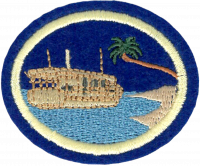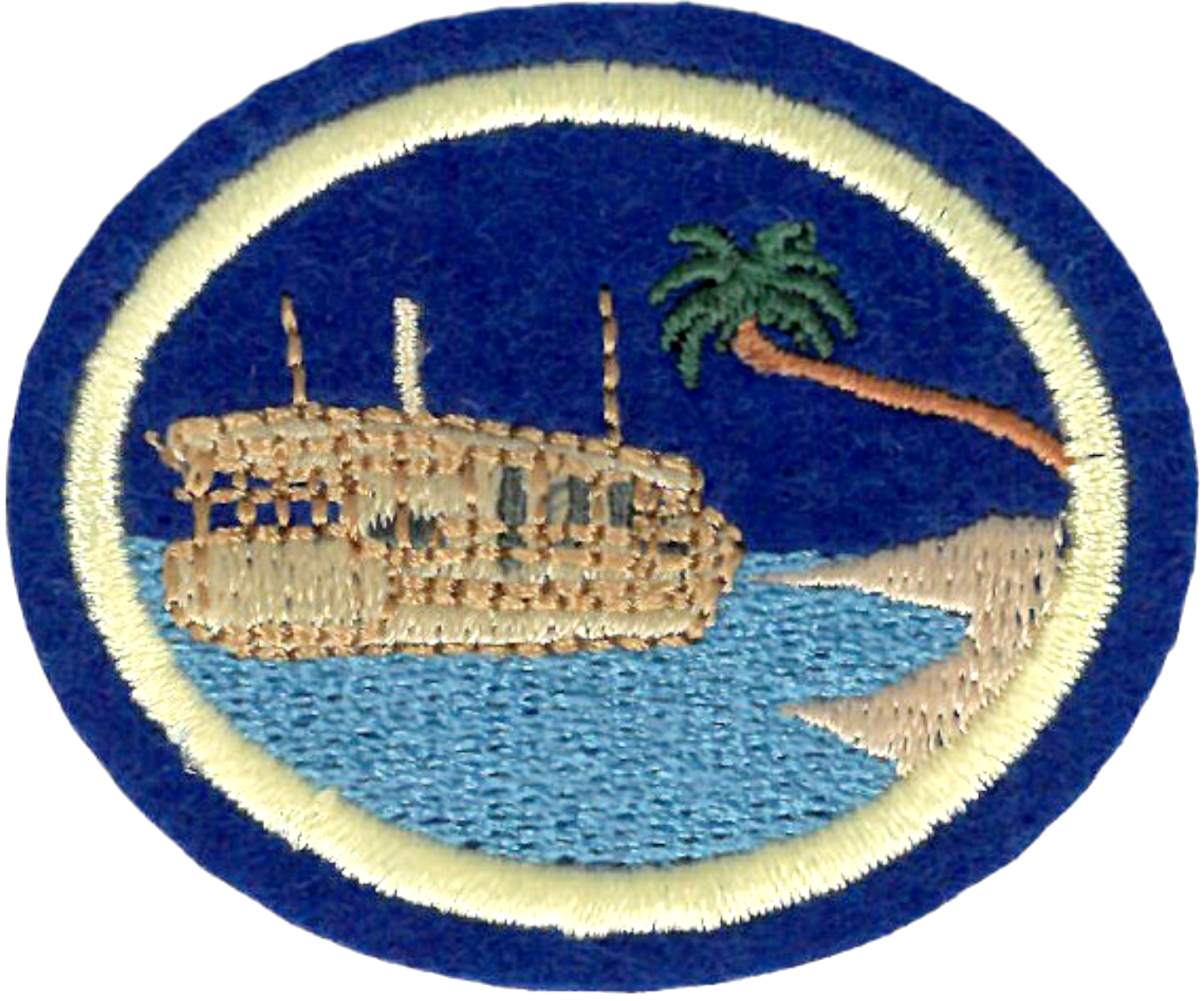Difference between revisions of "AY Honors/Early Adventist Missionaries/Requirements/es"
(Created page with "</noinclude>Elegir una de las siguientes opciones de actividad para contar la historia de cada uno de los siguientes misioneros/historias misioneras. Explicar por qué esta pa...") |
(Created page with "</noinclude>Merritt G. Kellogg, J. N. Loughborough y D. T. Bourdeau establecieron la primera misión en California en 1859/1868. <noinclude>") |
||
| Line 51: | Line 51: | ||
<noinclude></noinclude><section end=req5 /></b> | <noinclude></noinclude><section end=req5 /></b> | ||
| − | :<b>a. <section begin=req5a /><noinclude> | + | :<b>a. <section begin=req5a /><noinclude></noinclude>Merritt G. Kellogg, J. N. Loughborough y D. T. Bourdeau establecieron la primera misión en California en 1859/1868. |
| − | </noinclude>Merritt G. Kellogg, J. N. Loughborough | + | <noinclude></noinclude><section end=req5a /></b> |
| − | <noinclude | ||
| − | |||
:<b>b. <section begin=req5b /><noinclude><div lang="en" dir="ltr" class="mw-content-ltr"> | :<b>b. <section begin=req5b /><noinclude><div lang="en" dir="ltr" class="mw-content-ltr"> | ||
Revision as of 19:32, 21 May 2025
Nivel de destreza
2
Año
2025
Version
31.12.2025
Autoridad de aprobación
División Norteamericana
1. Individualmente o en grupo, explorar qué hace que alguien sea un misionero. Hacer una lista de al menos cinco comportamientos que podrían ser propios de un misionero. Clasificar estos cinco (o más) de mayor a menor importancia para ser un misionero.
2. Discutir con un grupo o resumir creativamente por qué cree que Mateo 28:19 y 20 es un pasaje clave para los misioneros y su llamado a compartir la historia de Jesús con personas de «todas las naciones».
3. Definir los siguientes términos en relación con las actividades misioneras:
- a. Misionero
- b. Cultura
- c. Grupo étnico
- d. Sensibilidad cultural
- e. Choque cultural
- f. Prácticas y valores
- g. Misioneros autosuficientes
- h. Misioneros patrocinados
4. Explicar por qué los primeros líderes adventistas se resistieron a hacer obra misionera y explicar cómo su comprensión de la misión cambió de «puerta cerrada» a «puerta abierta».
5. Elegir una de las siguientes opciones de actividad para contar la historia de cada uno de los siguientes misioneros/historias misioneras. Explicar por qué esta parte de la historia misionera adventista es importante para la gente de hoy.
► Opción 1: Dibujar una tira cómica detallada
► Opción 2: Crear un video, clip u otra publicación para las redes sociales
► Opción 3: Contarle la historia a un amigo o miembro de la iglesia
► Opción 4: Crear un colorido libro de cuentos para niños pequeños
► Opción 5: Representar una dramatización de varias escenas para un grupo
► Opción 6: Escribir un poema o letra de varios versos
► Opción 7: Crear una serie de entradas de diario que podrían haber sido escritas a alguien «en casa» con respecto a su trabajo misionero, sus dificultades y sus logros
► Opción 8: Otra opción aprobada por su instructor
- a. Merritt G. Kellogg, J. N. Loughborough y D. T. Bourdeau establecieron la primera misión en California en 1859/1868.
- b.
Michel B. Czechowski, European missionary (sponsored by Advent Christians).
- c.
J. N. Andrews, his children Mary and Charles who left for Europe.
- d.
James Edson White, who developed a boat to do missionary work along the Mississippi River to the formerly enslaved persons in the southern US.
- e.
Another missionary who brought Adventism to your country, state, province, or region of the world/country.
- f.
The individual(s) who shared the Adventist message with you and your family.
6.
Research how missionaries can learn to become sensitive to various cultures and languages:
- a.
List or explain several ways how missionaries work in culturally sensitive ways to demonstrate value and respect for the people they are trying to reach.
- b.
Create a list of at least five cultural differences or ethnic barriers that may inhibit someone’s ability to share their faith. Rank them in order for your culture and for the culture of another person from another part of the world. Be able to defend your rankings.
- c.
Create a convincing argument of the advantages of having a person serve as a missionary to their own culture rather than having a missionary come from another culture to share the Adventist message with a different culture than their own.
- d.
Summarize how Paul practiced cultural sensitivity on spreading the gospel message according to 1 Corinthians 9:19-23.
7.
Missionaries come from a wide variety of backgrounds and cultures and have served as missionaries across many different cultures, times, and places. Find at least three examples from different parts of the world of missionaries going from one culture to share their faith in another culture. What challenges did they experience? How did they overcome those challenges?
8.
Give examples of early modes of transportation and the length of time it took for early missionaries to reach the places they intended to go. What supplies and resources were needed for their trip? What did they bring or not bring? Pretend you were a missionary during the early Adventist missionary period and create a presentation of a missionary location you would travel to, what kind of transportation you would use to get there, a map of the route you would take to travel there, how long it might take, and a packing list of what you would need to take.
9.
Explain the difference between self-supporting and sponsored missionaries. How have each contributed to expanding the Adventist missionary presence in various places around the world? Participate in a debate regarding the advantages and disadvantages of self-supporting versus sponsored missions.
10.
Complete any two of the following projects individually or as a group:
- a.
Read a short missionary biography and write a summary or give a devotional to your club.
- b.
Interview someone in your congregation, if such a person is available, who has served in a cross-cultural missionary context. Conduct an oral history or interview that is recorded and transcribed.
- c.
Interview a current Adventist missionary and ask how they were inspired by earlier Adventist missionaries.
- d.
Create a timeline or diorama featuring early Adventist missionaries and how Adventism was established in that country or region of the world. Display this at church or school.
- e.
Choose two Adventist missionaries from two different parts of the world. Compare and contrast these missionaries and how they went about doing their missionary work and their life contributions. Create a display or series of dioramas that shows your comparisons and contrasts in a visual/graphical way.
- f.
Choose two Adventist missionaries from two different parts of the world. Compare and contrast these missionaries and how they went about doing their missionary work and their life contributions. Create a display or series of dioramas that shows your comparisons and contrasts in a visual/graphical way.


